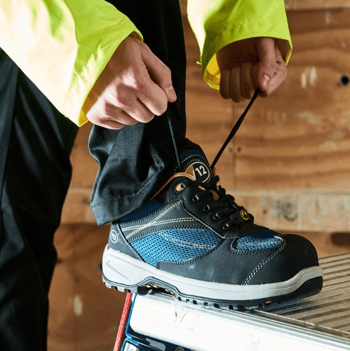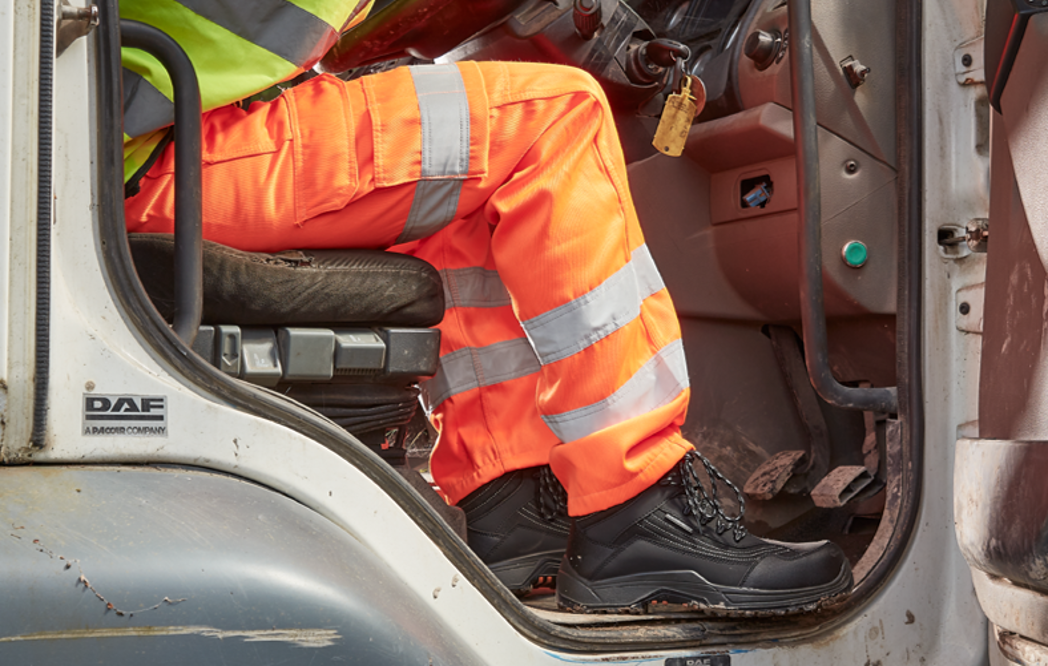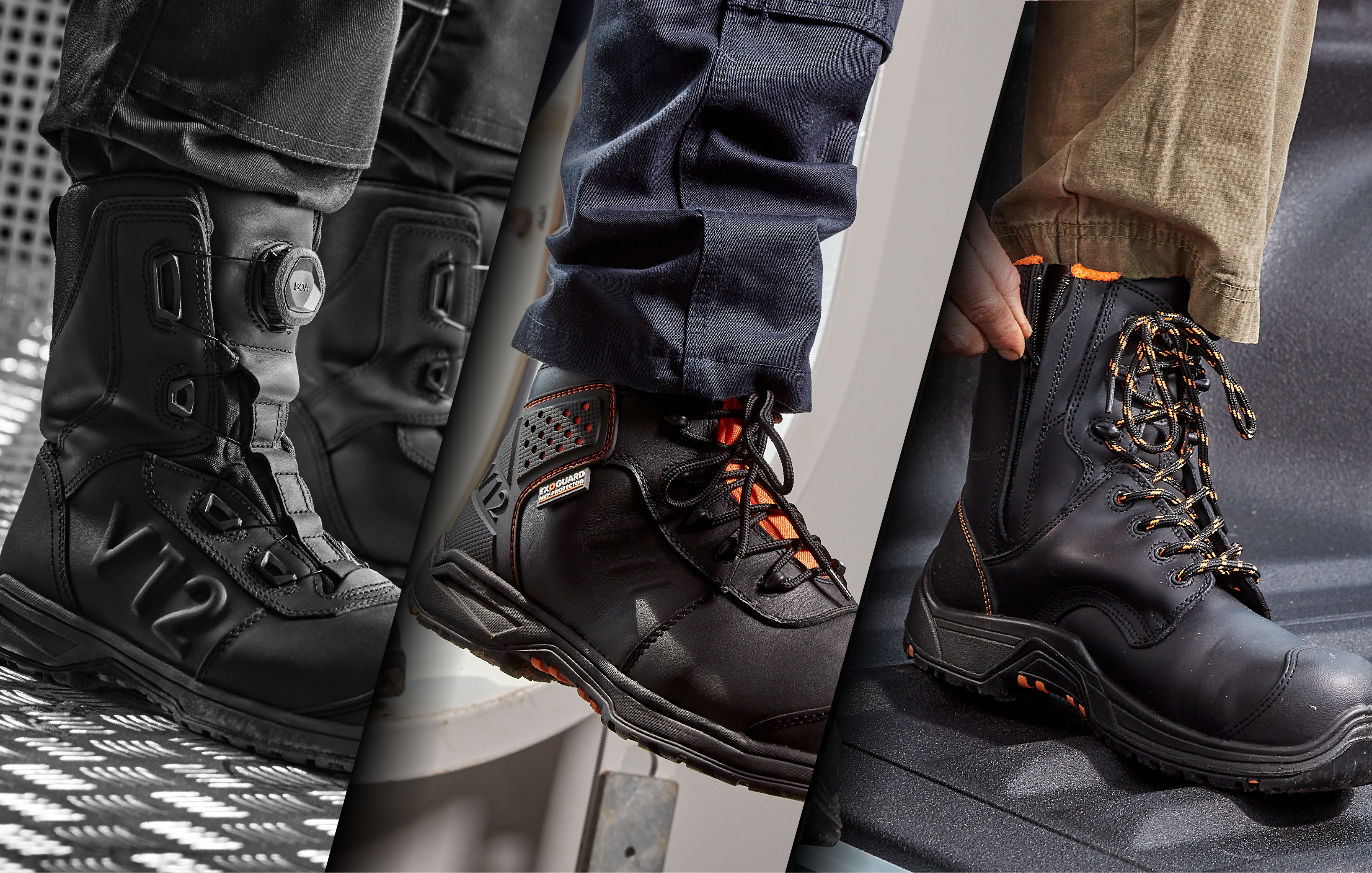If you’re responsible for a team who work on hot surfaces such as the floors of foundries or iron and steel factories, you’ll want to provide them with footwear durable enough to take the heat - and keep the wearer safe.
So, what are the best boots for working on hot surfaces, and how do you identify them? Let’s find the answers.
Heat-resistant boots
When looking for the best heat-resistant safety boots, you first need to know how to find them! Look for the code HRO (heat-resistant outsole) in the boots’ safety specification; this will mean it has a durable outsole - usually rubber due to its high heat resistance - to withstand hot surfaces.
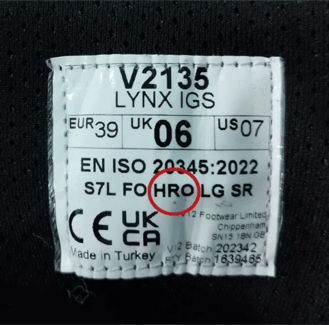
Take V12’s True Women’s FitTM Lynx safety boot.
This style is a great example of a safety boot with heat resistance, and a quick look at the tongue (pictured) shows this clearly. After the boot’s product name, size and EN ISO number, you'll notice the code HRO. Confirmation that this boot is heat-resistant, or can, as some people put it, 'withstand hot surface contact.'
But that’s not the only thing both the men’s and True Women’s FitTM Lynx’s sole can withstand: it's also diesel, fat, acid and alkali-resistant.
V12 boots with heat resistance – the IGSTM sole unit
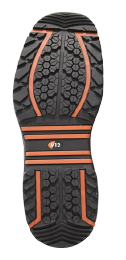 So, the HRO code is the way to tell if any safety boot is heat-resistant. But the way to identify whether a V12 safety boot comes with heat-resistant properties is if it is built with our innovative sole unit, the Intelligent Grip SystemTM (IGS).
So, the HRO code is the way to tell if any safety boot is heat-resistant. But the way to identify whether a V12 safety boot comes with heat-resistant properties is if it is built with our innovative sole unit, the Intelligent Grip SystemTM (IGS).
Inspired by tyre technology, this sole features a water-dispersing tread, ladder grips for safety at height and angled splines for optimum grip, but it’s made with a highly durable rubber. As a result, all V12 IGSTM styles are made and tested to be heat-resistant up to 300ºC. (more on testing in the FAQ section at the end)
V12’s waterproof hi-leg boot V1255.01 Rocky is a good example of a style designed with built-in heat resistance thanks to its IGSTM tread. See it in action below.
HRO and HI boots
Rocky, like many V12 safety boots, trainers and hikers is also designed and tested to have insulation against the heat, which is the HI safety standard.
Protecting the whole foot from environmental heat, a HI boot is best suited for people working in high-heat indoor environments such as foundries or manufacturing plants, where there is concentrated environmental heat rather than simply hot surfaces present, which is what a HRO boot is suited for. However, it’s common that a HI boot will also have a heat-resistant outsole.
Pictured: The Velocity IGS from V12's award-winning trainer and hiker range
Velocity is a safety trainer that includes both heat resistance and heat insulation. This means it protects the wearer from hot surfaces and environmental heat, and because it has been designed with moisture-wicking lining and a breathable mesh upper, it actively works hard to keep the wearer’s feet cool.
See the product for yourself here.
HEAT–RESISTANT SAFETY BOOT FAQS
How are heat-resistant boots tested?
For safety footwear to be labelled as heat-resistant, its soles are subjected to 300ºC temperatures for 30 minutes, and during that time, the sole must not melt, break or crack – even when bent. If it does, it fails the test.
Safety footwear standards have been updated – has heat resistance testing changed?
No. The test for heat-resistant footwear remains at 300ºC for 30 minutes in the new EN ISO 20345:2022 safety footwear standards. The code of HRO also remains unchanged.
Can I wear heat-resistant boots on hot tarmac?
Contrary to popular belief, heat-resistant soles are not typically designed or appropriate for working on hot tarmac. This type of material can become too hot even for tough rubber soles, and can also clog up the boot’s tread.
While a HRO boot’s tough rubber construction can withstand hot surfaces, sparks and even some fire exposure, prolonged working on hot tarmac often requires specialist footwear. So, if you're looking for boots for hot tarmac, you need to look for safety footwear that is heat insulating (HI) and preferably with a sole made of a compound such as nitrile, which has a stronger heat-resistance than ordinary rubber. This sole should preferably feature a flatter tread to prevent marking fresh tarmac but must still have a slip-resistant design.
Meeting the heat hazards
So, if you’re in charge of keeping your team in the right safety footwear when working on hot surfaces, heat-resistant soles can be an effective way to maximise footwear life and minimise risk. The key thing is to ensure you know the right safety feature to meet the specific heat hazard or hazards your team are working around.
If you need guidance on getting the right type of heat resistance or insulation for your workforce’s footwear, we can help. Using our 25 years of passion and safety footwear expertise, we've worked with companies across many industries to make their workplaces safer, healthier and happier. Reach out by clicking below.

.png)
